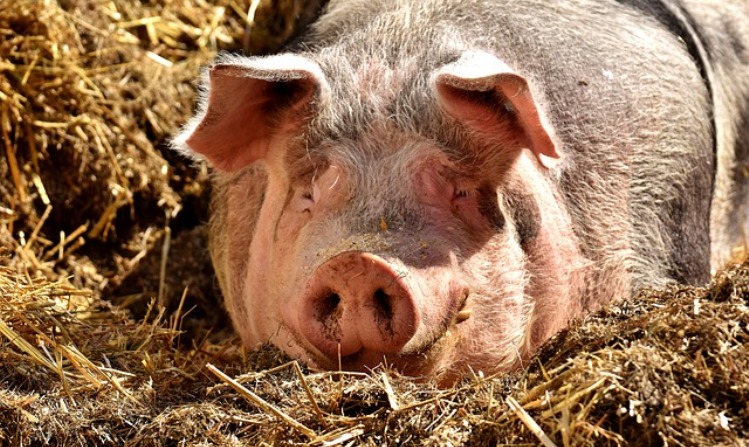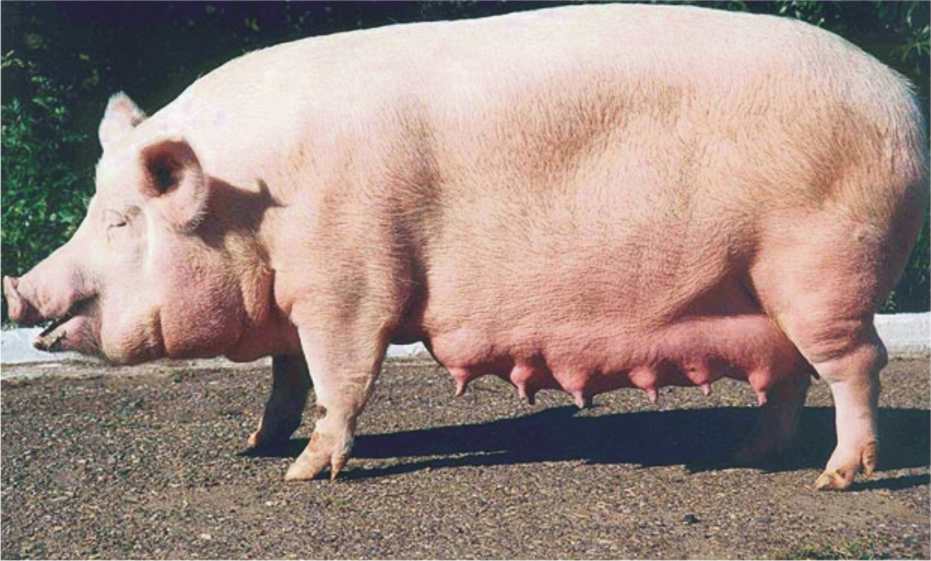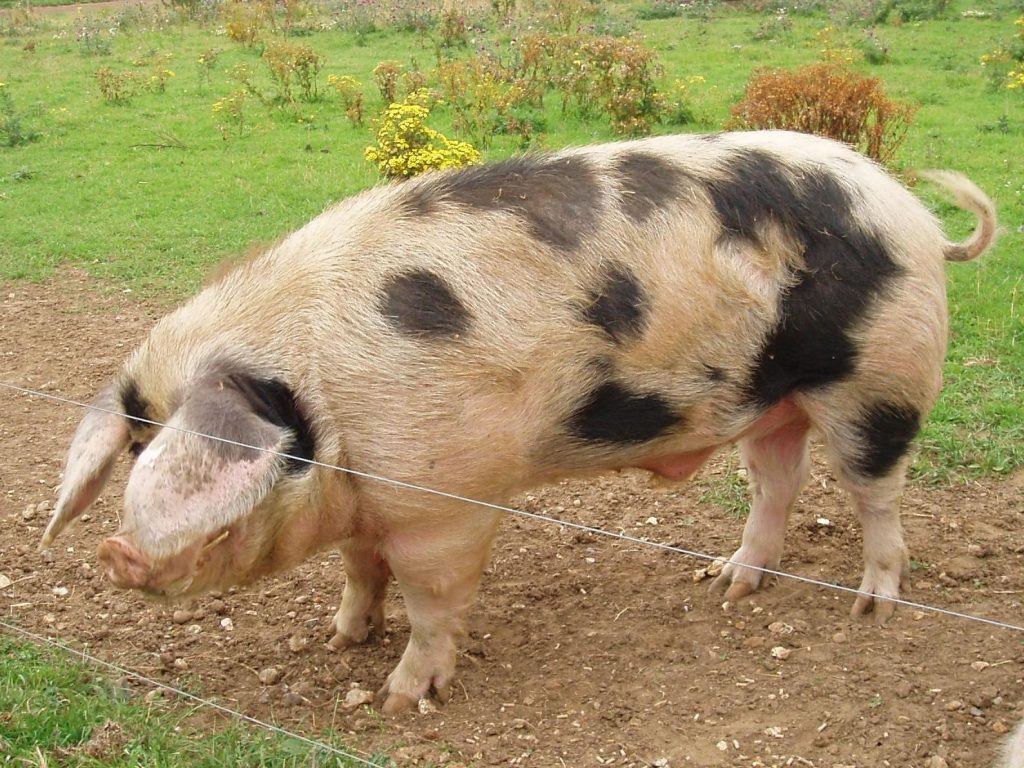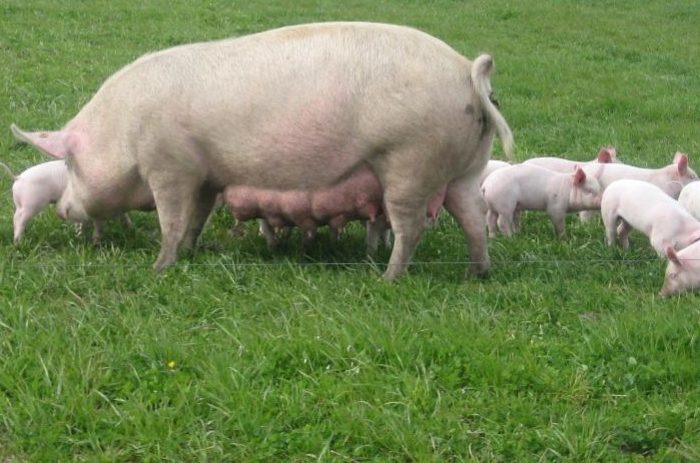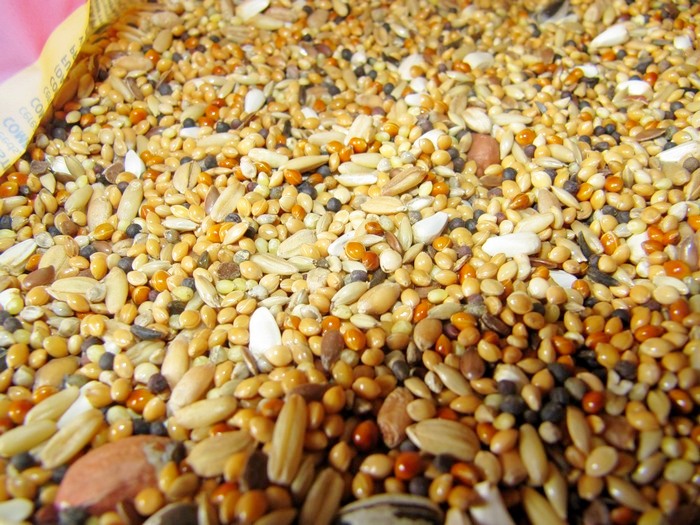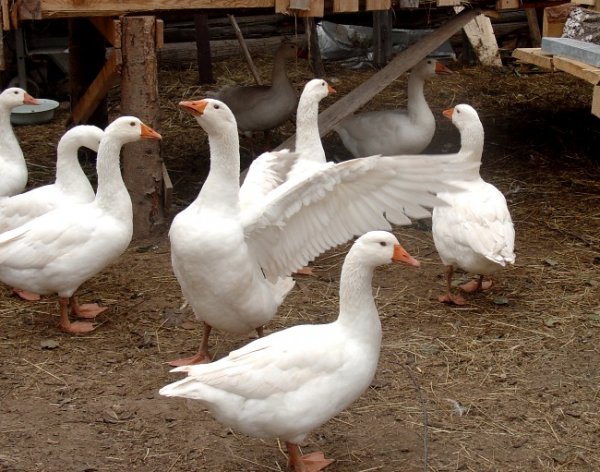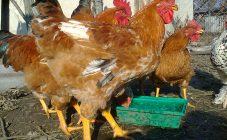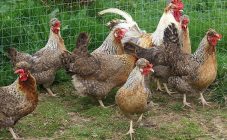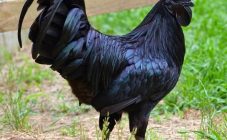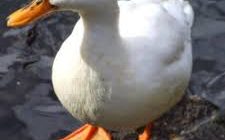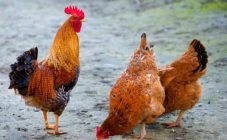Content:
Pig breeding and keeping is one of the most profitable farming activities today. These animals are not demanding to the diet, they consume less feed than cows or rams. When slaughtered, a domestic pig gives a lot of quality meat. Pork is the best-selling meat on the food market, from which many delicacies are made: sausage, boiled pork, stroganin.
Pig description
A pig is a mammal from the artiodactyl order. She has an elongated body, which reaches more than 1.5 m. Strong muscles, dense bristly hair. The elongated muzzle ends with a cartilaginous disc on the proboscis nose (called the pig's nose). The movable nose and penny allow the animal to get food by pulling it out of the ground.
The pig has 44 teeth, of which 4 are fangs, 2 at the bottom and at the top. The average body temperature is 38-40 °. There are 14 papillae on the stomach. The animal makes different sounds, but mostly breeders note the squeal and grunt of the pig.
The ears are large, but the eyes are small. They inherited poor eyesight from their ancestors (wild pigs), but the deficiency is blocked by acute hearing and smell. In weight, a pig reaches from 50 to 400 kg, and males weigh more than females.
The legs of individuals have a shortened appearance with hooves at the end. The tail looks like a corkscrew. Many are interested in how many fingers a pig has. The animal has 4 bony toes on each foot on the hoof.
How long do pigs live? Up to 15-20 years, although some boars live up to 45 years of age.
The main types of pigs
Experienced farmers, when establishing piglets, choose animal varieties based on a specific purpose:
- meat;
- universal;
- greasy;
- decorative;
- wild.
Breeding pigs
Pigs are polyester animals, as they have several sexual cycles per year, each of which lasts about 20 days.
When self-breeding pigs, you need to worry in advance about the selection of suitable species and breeds, respectively, feed the animals and monitor the onset of estrus in sows to help her in mixing with the male. When choosing sows, it is worth considering her age (10 months), weight (at least 100 kg). She must be healthy and mobile.
With the onset of sexual hunting, the animal becomes restless, does not eat, begins to listen and sniff. The nipples and genital loop begin to swell, mucus is released from the genital tract. When choosing a male (boar), it is worth considering his purebredness.
Sow pregnancy lasts from 100-120 days with normal development. The number of days will vary depending on the content and breed of the animal. All modern bred breeds are quite prolific. Even at the first farrowing, a young uterus can bring up to 9 cubs, and at the age of 1.5 years - already up to 14 - just as many as a pig's nipples. The prolificacy of queens decreases after about 5 farrowings. This is the norm. How many boobs pigs of other breeds have - everyone has the same.
What breeds of pigs are bred
The meat type of pigs is distinguished by a long body and a massive front part of the body and ham. Such animals are bred exclusively for meat, which makes up almost 2/3 of the total weight of an individual. The most common meat breeds of pigs:
- Landrace;
- Estonian bacon.
The Landrace breed is originally from Denmark. Externally, the pig has a torpedo-like body up to 185 cm of white color and weight up to 320 kg. Has a soft hairline, an even back. Differs in high productivity: the litter brings up to 12 piglets at a time. How many boobs do Landrace pigs have? Like everyone else 14.
A piglet grows up to 100 kg by six months. The meat of these pigs is of high quality. Among the disadvantages: the structure is weak, the animals are stress-unstable, they do not tolerate acclimatization well and are whimsical in food.
Pigs of the Estonian Bacon breed have an elongated body up to 180 cm, strong legs and large hams. Adults can weigh up to 320 kg. Fertility up to 12 piglets per farrow. Unlike the Landrace breed, they are unpretentious. They have excellent meat quality.
The universal species differs in that high-quality meat is obtained from young individuals, and lard from adults. These pigs are characterized by rapid daily weight gain.
Popular breeds:
- Lithuanian white;
- Large white;
- Ukrainian steppe white;
- North Caucasian.
Pigs of the Lithuanian white breed have a strong constitution of a whitish suit in length up to 175 cm. The weight of such an animal is up to 330 kg. Each offspring is up to 12 individuals. The breed is large.
Large white pigs are divided into bacon and greasy types. The animal has an elongated body with a curved back, short legs with heavy hooves, a light head with erect ears. There can be up to 16 piglets in one litter. Adults can weigh up to 370 kg. Animals are unpretentious, fast-growing, but they do not tolerate cold well.
The purpose of breeding the Ukrainian steppe white breed was to create individuals with good adaptation in arid zones in the south of the country. Outwardly, the boar has a wide body with thick bristles. Weighs up to 300 kg.
The North Caucasian breed was created to obtain strong individuals, resistant to diseases, with quick acclimatization. This is exactly what the representatives of this breed are. They have a black-and-white color, the body reaches up to 180 cm in length.
In sebaceous species of pigs at the age of six months, muscle tissue ends up growing and then only the process of obesity continues, which makes it possible to obtain up to 45% of fat from the total weight of the carcass. The most common breed of greasy look - Mirgorodskaya comes from the Poltava region. It has a strong, long body up to 180 cm in black and white color. A sow gives birth to 10 piglets at a time. An adult weighs up to 250 kg. Such animals are unpretentious in food and maintenance, grow quickly, but do not tolerate cold well.
There is also a decorative type of pigs. In most cases, they are created for entertainment, as pets. They are called mini-pigs. There are many breeds of decorative piglets, but the most popular are:
- Mini Mayyalino;
- Bergstrasser Knirt;
- Wiesenau;
- Mini sibs.
All these pigs are dwarf pigs. Adults of the Mini-Mayyalino breed gain weight up to 10 kg, Bergstrasser Knirt - up to 15 kg, Wiesenau - up to 25 kg, and Mini-sibs - up to 35 kg.
Other decorative breeds are kept as pets, as they are easy to tame and teach teams.
The species of wild pigs are used by humans except for hunting. Distinguish between wild boars, warthogs, dwarf pigs.
How to keep and feed pigs
To keep pigs, you need a dry room with an air temperature of 18 to 20 ° C without drafts.The area of the barn should be at least 4 m² per individual. On the floor, a flooring of tightly laid boards is preferable. In addition, next to the premises, it is worth equipping the walking area by fencing with a strong fence of medium height.
It is better to keep at least 2 piglets in one shed, since the animals are herd. Alone, the animal can wither away: become too fat or, conversely, go on a hunger strike.
One of the main factors influencing the development of pigs and the quality of their meat is undoubtedly nutrition.
To get quality meat at the exit, it is worth knowing not only when, but also how to feed the pigs. All food products for them are divided into categories depending on the impact on the quality of pork.
Products contributing to high quality pork:
- barley;
- beet;
- carrot;
- millet;
- silage;
- alfalfa.
When these products are included in animal feed, the negative effects of other components are reduced.
Products that reduce the quality of pork:
- corn;
- potatoes;
- buckwheat;
- wheat bran.
To reduce the negative effects of these products, you need to add up to 50% of healthy products to the feed.
Products that strongly degrade the quality of pork:
- soy;
- food waste.
They give the meat a strong, unpleasant smell and a loose texture. Soy and waste can be added to feed, but not more than 30%, provided that healthy products are added.
Pig fattening will depend on the desired result. Farmers distinguish between meat and tallow. When fattening, the result is young, lean pork. To achieve this result, a high daily growth must be maintained, for which concentrates are often added. Usually these are potatoes, but do not forget about their effect on the quality of meat. In summer, it is worth paying more attention to green fodders, increasing their content in fodder up to 50%. This will create a good appetite, which will lead to increased growth.
Potatoes, corn and barley are used for fattening. When the weight reaches 120 kg, you can include hay flour, sugar beets in the diet.
How quickly a pig is ready for slaughter will depend on its breed and keeping regimen. Usually piglets grow up to 100 kg in six months or a year. You can raise the animal further, but the meat of young individuals is more tender and less fatty.
Diseases in pigs
If an individual has at least one sign of illness in the herd, it must be urgently isolated from everyone and measures to be taken for treatment. Symptoms that should alert the breeder:
- rapid breathing;
- dull eyes;
- diarrhea;
- bristles and skin are greasy;
- the tail is limp;
- visible tissue inflammation;
- lack of appetite;
- the individual is kept separate from the rest.
The most common and frequent diseases:
- swine plague;
- erysipelas of pigs;
- trichinosis.
Swine plague is a viral disease with a high mortality rate. Signs: a sharp rise in temperature, lack of appetite in the presence of strong thirst, inhibited perception, a wobbly gait, the animal is constantly lying, can screech softly. Pigs with this disease cannot be treated and are sent for slaughter. To keep the pigs safe in advance, you need to disinfect the area from time to time and carefully approach the selection of feed.
Pig erysipelas is dangerous not only for the animal itself. This is a form of sepsis. This disease can be transmitted by airborne droplets from other pigs, through the skin, as well as food and bedding. Symptoms of the disease: high fever, weakness, the skin becomes covered with dark red spots. For treatment, antibiotics, serum against the causative agent of erysipelas are used. Wounds are treated with streptocide.Feeding the pig during this period should be protein-rich, rich in vitamins. To prevent the disease, it is necessary to vaccinate individuals, monitor the presence of rodents on the territory and disinfect the premises.
Trichinosis is also a serious illness for pigs and humans. The causative agent is Trichinella, which, as an adult, lives in the intestines, laying larvae in the muscles. Infection occurs from feed, in the case of humans - from pork. For prevention, it is worth monitoring the nutrition of pigs and avoiding free walking. Symptoms of the disease: lack of appetite, sluggish, passive state, muscle pain, diarrhea, high fever, the pig grunts very little. Treatment is carried out with benzimidazole drugs. The meat of pigs who have recovered from trichinosis should in no case be eaten, since not all larvae die during treatment.
Thus, with a careful approach, pig breeding can become one of the key incomes of a farming family in life. And if the rules of feeding and keeping are observed, it will be possible not only to avoid diseases, but also to obtain high-quality pork and lard, which will allow us to occupy a niche in the market of meat products.

